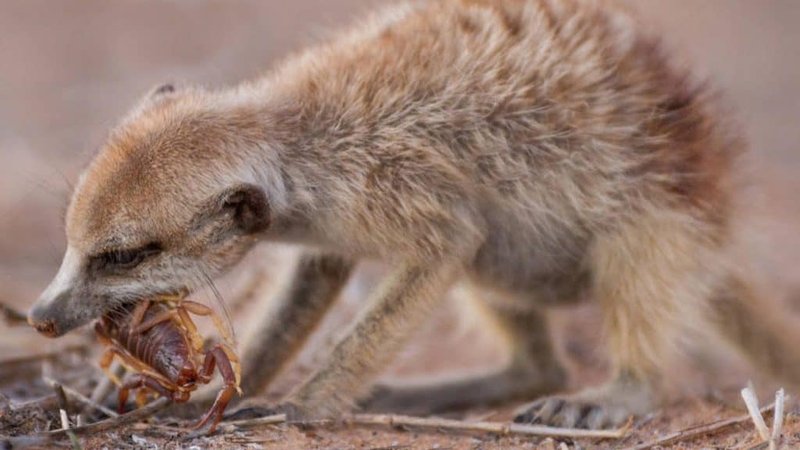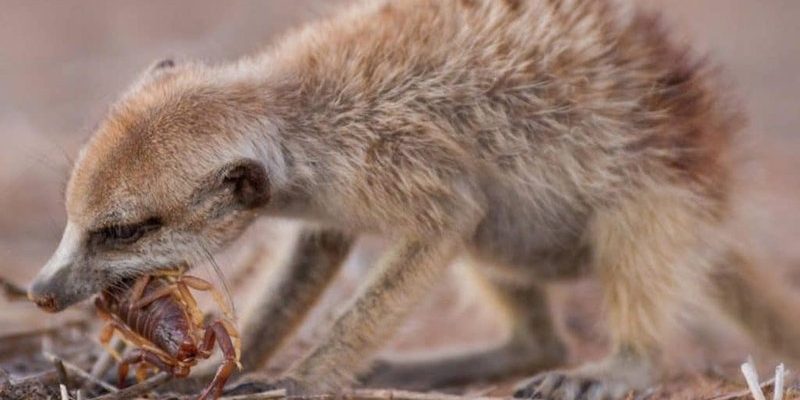
Meerkats have a diet that’s as diverse as their personalities. They eat everything from insects to small rodents. Their hunting strategies reflect their social nature, often involving teamwork and clever tactics. Think of it like a well-coordinated dance where each member has a role to play. In this article, we’ll explore their diet, hunting methods, and the challenges they face in the wild. So, grab a cup of coffee, and let’s get started!
What Do Meerkats Eat?
Meerkats are opportunistic omnivores, which means they eat a mix of plants and animals. Their diet primarily consists of insects, which make up a significant portion of their meals. They’ll chow down on various critters like beetles, grasshoppers, and caterpillars. But that’s not all. They also feast on small mammals, reptiles, and even fruits and seeds when available.
This adaptability in their diet is crucial for survival, especially in the arid environments they call home. The harsh conditions of southern Africa mean food can be scarce, and meerkats have learned to eat whatever is available. Honestly, this knack for finding food reminds me of scavenging for snacks at home. You find something here, a little something there, and before you know it, you’ve whipped up a feast!
The Role of Insects in Their Diet
Insects are vital to a meerkat’s diet. Not only are they abundant, but they also provide critical nutrients. Meerkats use their sharp claws to dig into the ground, searching for hidden insects. You might picture them like enthusiastic kids digging in a sandbox for treasure—only their treasure is a scrumptious meal.
Meerkats also have a bit of a secret weapon: their keen sense of smell. They can detect insects underground, which helps them locate food in times when visibility is low. This ability to sniff out dinner is impressive and shows just how well-adapted these little hunters are in their environment.
Teamwork Makes the Dream Work
One of the most captivating aspects of meerkats is their social structure. They live in large family groups called clans, typically consisting of around 20 to 50 meerkats. This tight-knit community is crucial for their hunting success. In other words, they’re not just hunting solo; they’re working together like a big family.
When searching for food, meerkats take turns standing guard while others hunt. One meerkat acts as a lookout, scanning the horizon for predators or danger. It’s like having a designated safety officer while you’re out grocery shopping—only in this case, the stakes are much higher! This teamwork allows them to be more efficient in their hunting efforts and helps keep the group safe.
Cooperative Hunting Techniques
The meerkat clan employs various hunting techniques to maximize their chances of catching a meal. They use a combination of strategies, sometimes surrounding prey to make it easier to catch. For example, think of a soccer team passing the ball around to get closer to the goal. Each meerkat plays a position, making sure they’re in the right spot at the right time to pounce on their target.
Another common method involves using their vocalizations. Meerkats communicate with each other through various calls, which can indicate the presence of food or warn about potential threats. This communication is key, as it allows them to coordinate their efforts and stay connected during the hunt. It’s like having a family chat over dinner, ensuring everyone knows what’s on the menu!
Challenges in Finding Food
Despite their impressive skills, meerkats face numerous challenges when it comes to finding food. The arid environment of southern Africa can make food scarce during certain seasons, leaving them to constantly search for new sources of sustenance. This means they must adapt their hunting strategies regularly.
Predators are another significant threat. Animals like eagles, jackals, and snakes prey on meerkats, making it crucial for them to stay alert. The lookout meerkat plays a vital role here, keeping an eye out for danger while the others eat. It’s a tough life, always on the lookout for both food and threats, but that’s just part of the meerkat experience.
Seasonal Changes and their Impact
Seasons can dramatically affect a meerkat’s diet and hunting strategies. During the rainy season, food availability increases, with insects and plants thriving. This is a time of abundance for meerkats. However, when the dry season kicks in, they may have to venture farther from their burrows to find food, which can increase risk from predators.
Additionally, the different food sources available can lead them to shift their hunting tactics. For example, if insects are less plentiful, meerkats may turn more to available plant matter or small rodents. This flexibility is a testament to their survival instincts and adaptability in an ever-changing environment.
Learning from Their Environment
Meerkats are incredibly intelligent creatures, and they learn a lot from their experiences and surroundings. Young meerkats, known as pups, watch adult members of the clan as they hunt and find food. This observational learning is key in helping them develop their skills over time.
For instance, pups often practice digging and foraging as they follow their parents. It’s like how kids learn to cook by watching their parents in the kitchen. Over time, they pick up techniques and tricks that help them become successful hunters themselves.
Meerkats also adapt their strategies based on past experiences—if a particular hunting method worked well before, they’re likely to use it again. This ability to learn and remember is a huge advantage in the wild.
Social Learning and Oversight
As social animals, meerkats thrive on the input of their clan. This community aspect means that they often collaborate on hunting strategies, sharing knowledge and techniques they’ve picked up. The teamwork observed in their hunting can be very strategic and is a perfect example of how social learning can lead to improved survival rates.
For instance, if one meerkat discovers a highly productive hunting ground, they might signal to their clan members to join in the hunt. This shared knowledge not only helps individual meerkats but also strengthens the entire clan, promoting cohesion and survival.
In summary, the diet and hunting strategies of meerkats are a fascinating blend of teamwork, adaptability, and intelligence. These small but mighty creatures demonstrate how social behavior plays a crucial role in their survival. From their diverse diet of insects and small animals to their impressive hunting techniques, meerkats show us the importance of working together to overcome challenges in their environment.
Next time you see a meerkat, think of the cooperative hunters they are and the incredible strategies they employ to thrive in the wild. Their world is a testament to the beauty of nature and the power of community, reminding us that even the smallest creatures can have a big impact.

